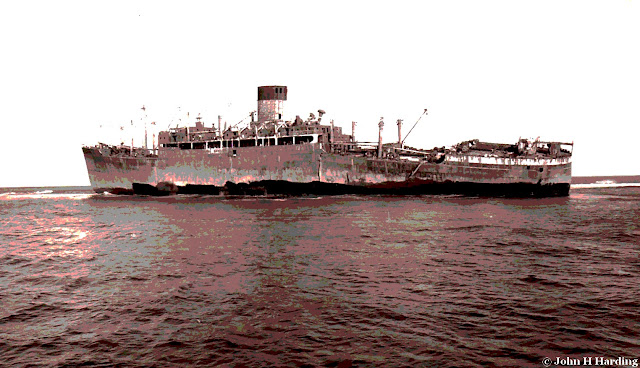 |
| LODA 1855, up under the roof of the entrance to St.John's Church of England, Pialba, Hervey Bay. The name is on the bell but someone thought that it should be hidden when installed in this location! |
Thursday, 25 April 2013
LODA (1855)
QUETTA
THE DUNBAR
THE DUNBAR (Wikipedia.org) <Click
 |
| Kathy Troutt - Australia's original teen mermaid, remembered well for her diving to over 200 feet on scuba, aged 17. |
 |
| The first scuba divers on The Dunbar (1955) |
JOHN SUMNER on You Tube
About
shipwreckbells
Originally I was one of the early spear fishermen in Sydney 1955. Later I started a tiny dive shop in the backyard of my parents house. This was the Aquanauts Dive Shop (1960).
Later I moved into a main road shop for a few years until I took over the leading scuba shop St. George Underwater Centre, Beverley Hills in 1967.
Running dive shops put me in contact with others doing deep dives on shipwrecks and underwater photography.
I’m no longer in the dive shop business although I sell books and DVD’s about my favorite subject, SHIPWRECKS.
The bell of a shipwreck is like the heart of the vessel.
I’m prepared to go to great lengths to discover and photograph a shipwreck bell.
For me it is a worthy cause that promotes scuba diving and photography.
There is nothing more beautiful than discovering a bell, with a NAME and a YEAR (of manufacture).
JOHN SUMNER - Curator of this blog
SS YONGALA
 |
| SSYongala wreck in 1999 © john h harding |
.jpg) | |
| SS Yongala on Wikipedia.org <Click | YONGALA Steamship foundered in gale off Cape Bowling Green, Queensland 1911 |
Wally Gibbins (1930 – 2006) was making films with Ben Cropp when they both dropped in on the Yongala shipwreck, SE of Townsville, Queensland.
The ships’ bell had not been found. Wal had a fair idea where it should be. He’d studied the layout of the ship and swam to where the bell should have been. Nothing there.
Out on the sand was a large clump of barnacles and a part of the ship. It looked as if this had broken away from the structure. Judging by the shape and weight Wal concluded it must be the prized bell.
Getting it to the surface would have been an effort for most people. For Wally, who’d salvaged giant shipwreck props (in 250 feet of water on compressed air) this would have been a walk in the park.
When being cleaned, the delight on the faces of Ben and Wally would have been a memorable sight.
Here was the prize find of the most famous shipwreck (for divers) in our Australian waters.
The above picture is a re-construction in 1983 under the Coffs Harbour Jetty. The bell had been on display in Wally Gibbins' private shipwreck and sea shell museum (open to the public) in nearby Sawtell. See his blog for pictures.
The bell had been removed from Wal’s own former sea shell and shipwrecks museum, especially for this picture. Some 16mm footage was also made – which has remained in John Harding's archives.
John Sumner (a shipwrecks expert and long term friend of Wally Gibbins) is considering publishing a limited edition postcard using this image, and others featuring shipwreck bells.
WALLY GIBBINS - < Click to visit his blog
SS YONGALA on Wikipedia.org <Click
 |
 |
| Ben Cropp has made over 100 underwater documentaries. |
.jpg) |
| Maori Wrasse |
Subscribe to:
Posts (Atom)






























.jpg)




